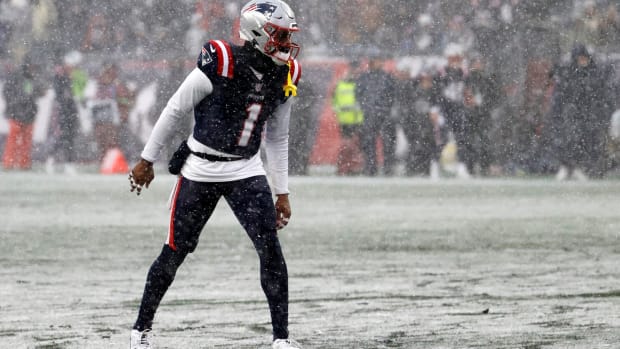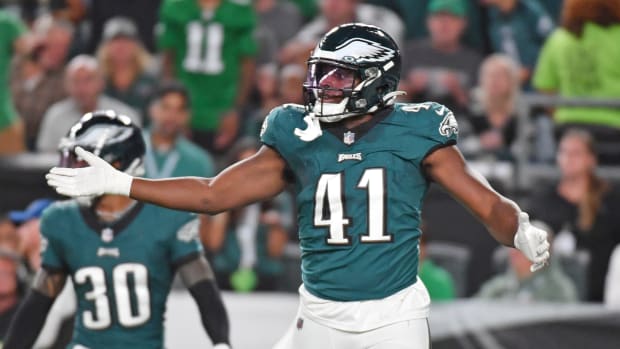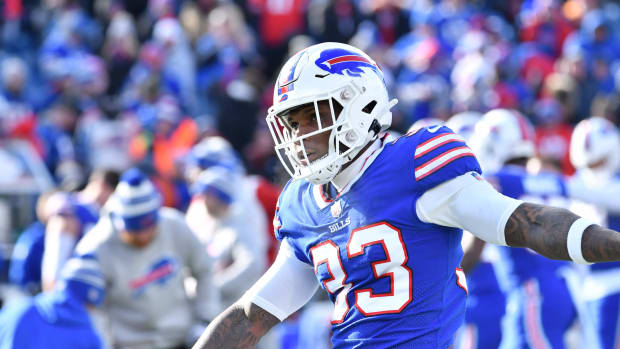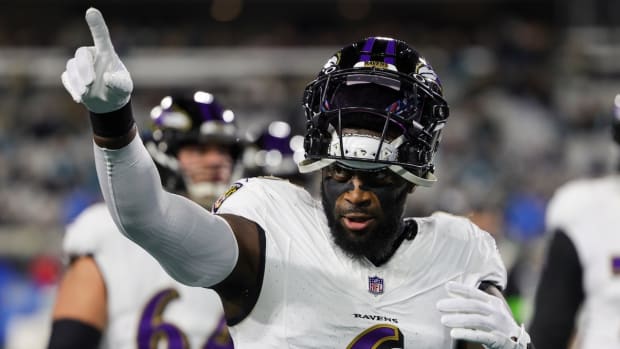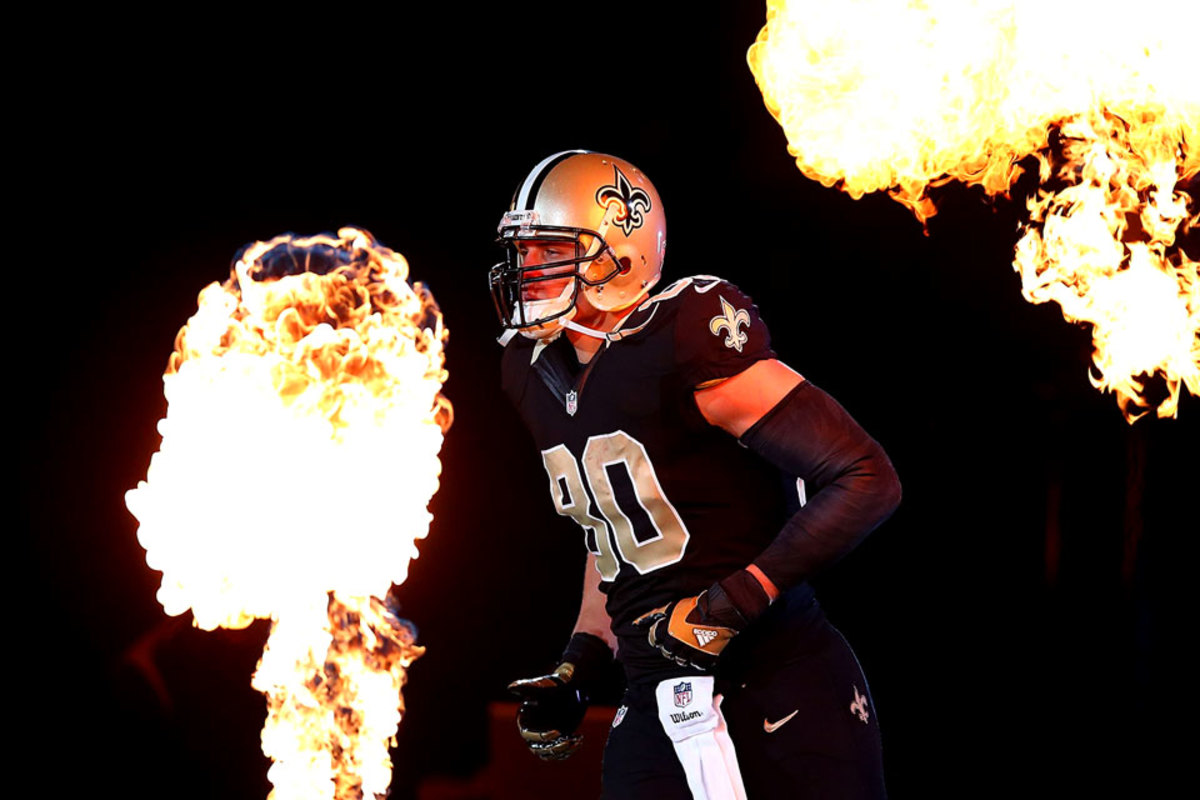
An Explosive Start to the NFL’s New Season
So much has already happened, and the busiest week during the business of football calendar is still in progress. Here a few top-of-the-mind thoughts on the beginning of the NFL’s new year:
Tampering with Tampering
Before the official start of free agency, there was the unofficial start of free agency, a 72-hour window in which teams and agents could “fake negotiate” contracts. Now, the NFL is reportedly investigating deals that were reported before the official start of free agency on Tuesday, which were supposed to be “negotiating positions” instead of actual deals. To that investigation I respectfully say: good luck!
Whether there is a pre-free agency window or not, whether it is in February, March, April or May, deals will be secured before the official opening of free agency. Teams and agents will have plausible deniability, because there are always deal terms to clean up and finalize, so no deal is actually “done.” However, even before this 72-hour window was implemented last year, there would be always be agreements announced within hours, even minutes, after the start of free agency. Does the NFL really believe such deals were negotiated within minutes? Please.
There are times when team negotiators shake their heads at the policies of the NFL, murmuring about the league office operatives never having to actually negotiate player contracts with agents. Were teams to limit their discussions to “negotiating positions,” they would watch the player and agent sign an actual contract with a competitor. In the cutthroat world of free agency, teams have to be more aggressive than that.
Roundtable
The NFL is still reverberating from the frantic series of signings, trades and retirements that marked the official opening of the league year. Our staffers debate the reasons, look at who’s done well (Raiders!) and project what’s still to come FULL STORY
Trading Chip
It had been no secret that Chip Kelly’s quarterback of interest was Sam Bradford. Pundits can disagree with Kelly on Bradford’s value—no one can dispute there’s an injury history—but he is convinced that Bradford can run his system as well as any available quarterback.
As to Nick Foles, it seems he never had a chance despite having an astonishing touchdown to interception ratio (27:2) in 2013 and a 14-4 record as a starter. Beyond the draft compensation and conditions, what interests me about this trade is that the Eagles were investing in a player with an expiring contract (at a high number of almost $13 million).
Kelly’s trading of LeSean McCoy for Kiko Alonso also surprised many people, but it’s another example of the coach, who is now in complete control of the Eagles, putting his stamp on the team.
I sense that McCoy, like DeSean Jackson, didn’t completely “buy in to the program,” thus he was shipped out while he still held some value, rather than a year from now when there may be little to no value. McCoy, to his credit, leveraged the trade to great financial benefit. His rumbles of discontent about Buffalo resulted in a $13 million bonus—more than he was scheduled to make in salary and bonus this year—as part of an extension worth $40 million, with $26.5 million guaranteed.
Perhaps we will never know if McCoy would have boycotted Buffalo without extra money, but the Bills appear to have bought his love. In a declining market for running backs, McCoy bucked the trend, at least in the short term. As to the long term, we will see. Interestingly, I was with the Eagles as a consultant when we acquired a player from Buffalo at the top of his position—Jason Peters—and immediately upgraded his contract as part of the deal. Now it has gone the other way.
Rebound Trades
The other major trades at the start of free agency make more sense when looking deeper. The Saints continue to make head-scratching salary cap management moves. They dug a deeper hole this year by trading Jimmy Graham, taking on a $9 million dead money charge from accelerated proration of Graham’s $12 million bonus last year, but they do clear Graham from their future books.
The Ravens, always on the cap edge, balked at extension talks with Haloti Ngata and moved him. As to the acquiring teams, they are like lovers on the rebound from procuring their desired companions. The Seahawks lost out on Julius Thomas and the Lions tried mightily to retain Ndamukung Suh. Their respective acquisitions, Graham and Ngata, were the next best options.
Speaking of Suh…
A Lost Opportunity for a Game-Changing Contract
With the most leverage of any NFL player in recent years, the $19 million APY (average per year) and $60 million guaranteed that Suh commanded from the Dolphins is not surprising. But I wonder if there may have been an opportunity for a true breakthrough: a fully guaranteed contract.
What if Suh’s agent, Jimmy Sexton, had countered the six years at $114 million with, say, five years at $85 million (a $17 million APY) fully guaranteed? With other teams salivating at the prospect of Suh, I wonder what would have happened. As an alternative, Suh could have asked for the $60 million guarantee to paid “flat,” meaning $10 million a year over all six years. That would have been a more meaningful guarantee.
The Dolphins and billionaire owner Steve Ross are obviously into taking big swings; in recent years they took runs at landing the likes of Peyton Manning and Jim Harbaugh. Also, new team executive Mike Tannenbaum has looked for similar star attraction, having traded for Brett Favre years ago when he was with the Jets. Given Tannenbaum’s long relationship with Sexton, my sense is that he and Ross had been talking about Suh for a while.
A final note on Suh: remember when some said his reputation for dirty play would somehow affect his value? Not quite.
The Wild West
Free agency is the Wild West; every year there are stories of free agents agreeing in principle to deals only to back out and sign elsewhere. This year, Frank Gore agreed with the Eagles but was then aggressively pursued by the Colts. This will certainly cause some relationship issues between the Eagles and Gore’s agent, Drew Rosenhaus, who, ironically, also represents traded running back LeSean McCoy.
Rosenhaus will say that he is doing what the player wants and, due to him having so many players, the Eagles will have to deal with him again.
I remember a similar learning experience, having reached agreement (or so I thought) with free-agent defensive tackle Sam Adams. Adams had been visiting the Ravens when we came to an agreement, and we put him on a flight to Green Bay from Baltimore. Then things went sideways. After a night of not being able to reach his agent, I woke up to find out that the Ravens had literally removed Adams from the plane and returned him to their facility to sign a sweetened offer (our deal). It was a painful experience, and I vowed we would never do business with the agent again. Of course, a couple of years later he had a player we were interested in and I swallowed my pride and called him.
NFL Draft
Louisville safety Gerod Holliman had 14 interceptions in 13 games last season, tying a Division-I record. How meaningful is that number to his draft projection? Plus, whether or not to buy into the eye-popping stats of four other prospects FULL STORY
Deadlines Spur Action
We saw several players—Randall Cobb, Bryan Bulaga, Devin McCourty, Jerry Hughes, Mark Ingram, Kareem Jackson and Brandon Flowers—re-sign with their incumbent teams before the free-agency floodgates opened. Teams do not reveal their best offer until they absolutely have to, and good agents use that knowledge strategically.
Unless there is discord between team and player, I have always felt that the incumbent team usually has an advantage. Players, like most of us, are creatures of habit; they get accustomed to their location, their system, their coaches, trainers, etc. Change can be good, but most players would rather stay where they are if things are relatively equal.
One deadline deal especially caught my attention. Cobb was in prime position to leverage multiple bidders toward a $12-13 million APY, with $25 million guaranteed. But I knew it was going to be tough to pry Cobb away from Green Bay, and Cobb truly did give a hometown discount, with an APY of $10 million and $17 million guaranteed. There is, however, a positive to the contract for Cobb. With only a four-year term, 24-year-old should certainly have another bite at free agency.
Maclin Matters
I had put Jeremy Maclin in the same category as Cobb, a player who would be very hard to pry away from his incumbent team and its prolific offense. Evidently, money talked with Maclin, as I sense that to be the issue with his leaving Philadelphia.
Unlike other players not fully buying into Chip Kelly’s program, Maclin was all in and a model worker. Kelly wanted him back, but it is unclear if he set an upper limit on the contract. I am told the Eagles were reluctant to reach the $10 million APY range, and that Kansas City went to $11 million. Maclin now joins the coach who traded up in the draft to get him, Andy Reid, in his home state of Missouri. Even with the home state connection, Maclin leaving the Eagles is a surprise.
Musical Chairs
We have seen the lucky 10-12 players who have won the precious “golden tickets” in the “stupid money” phase of free agency. The way to judge the 2015 NFL free agent market, however, is based on what happens now. The key question is how long it takes to move to the “musical chairs” portion of free agency, when players are just trying to get a seat at the table before the money dries up completely. In robust times, that can take weeks. My sense is it will be here within a week.
Jets Paying As They Go
In terms of cap management and the structure of these contracts, here is the way to test whether a contract is well managed: see how closely the cap number and the cash number align. The closer they are to being equal, the better managed that team is from a financial standpoint.
In this regard, kudos to the Jets for structuring Revis’s contract with (guaranteed) salaries of $17 and $16 million in each the first two years, with $6 million of the $15 million third-year salary guaranteed. The Jets also structured the extension for David Harris as follows: guaranteed $7.5 million in each of the first two years, and a nonguaranteed $6.5 million in the third year. In both contracts, cash and cap are aligned; there is no bonus, no proration and no cap consequences if the Jets move on after the two guaranteed years. Cap-rich teams can truly “pay as they go” with contracts while not worrying about any future consequences.
As to Revis, he signed a six-year contract with Tampa Bay two years ago (for a still-record cornerback contract of $16 million APY); he signed a two-year contract with the Patriots a year ago, and now has signed a five-year contract with the Jets.
We’ll Take A Ham Sandwich
The trades of LeSean McCoy and Brandon Marshall are symptomatic of a trend in the NFL: players reach a certain age, level of contract and resistance to changing team environments, and they are shipped out. When front offices dangle high-salaried veteran players in a trade, at least in terms of planning purposes, they’re already gone.
While many criticize what was gained in exchanged for McCoy and Marshall, in some ways the Eagles and Bears netted more than one could reasonably expect, because they were leaving either way. Like DeSean Jackson from Philadelphia, Darrelle Revis from Tampa, Steve Smith from Carolina, and now Andre Johnson from Houston, the teams decided to move on; they would have taken a ham sandwich to just have something in return.
Retiring Instead of Being Retired
Finally, the unexpected retirements of Patrick Willis, Jason Worilds and Jake Locker are an interesting development. Every situation is different, but each player seemed aware of the physical and mental toll that playing football can take—and each seemed to be considering the bigger picture. These are still isolated cases rather than anything indicating a trend, but it is so rare to see NFL players actually retire rather than be retired. All of these players could have played this season, and made a lot of money—Worilds and Locker were first-time free agents—but they chose health preservation over financial compensation. I always tell players that professional football is not a career; it is a head start on the rest of their lives. These guys have a nice head start, and I’m wishing them well in their next phase.
Follow The MMQB on Facebook, Twitter and Instagram.
[widget widget_name="SI Newsletter Widget”]




































